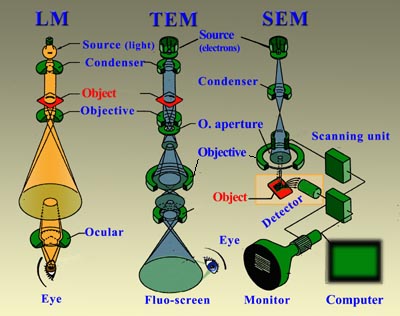1. The invention of the microscope. Without this, nothing would have started.
2. The use of dyes and stains. These were a byproduct of the fabric industry in the 2nd half of the 19th century. When people tried them out on specimens mounted on the microscopes, they found that they could see structures that were previously invisible.

3. The use of oil immersion and light manipulation (eg. phase contrast). Oil immersion pushed the magnification limits of the microscope out to 1000 X while phase contrast techniques allowed for better contrast of specimens highlighting structures either unseen or unnoticed.

4. Electron Microscopes. Because they used a beam of electrons at a much shorter wavelength than visible light, magnification and resolution was greatly enhanced.

When comparing the advantages of light and electron microscopes, you tend to find that the disadvantage of one is the advantage of the other.
Advantages of light microscopes include; price, ease of use, live specimens can be mounted, images can be seen directly in colour.
Advantages of electron microscopes are; extremely high resolution and magnification (which trumps a lot of the disadvantages)
Disadvantages of light microscopes may be; limits to magnification and resolution (a biggie), some training to use stains, lighting and oil immersion techniques needed.
Disadvantages of electron microscopes are; costly, specialised training required to use, specimens are cannot be live, images will be in black and white unless computer enhanced.
No comments:
Post a Comment